| Weight | 67 g |
|---|---|
| Dimensions | 75 mm |
| Focal Length (mm) | |
| Max Aperture (f) | |
| Min Aperture (f) | |
| Aperture Blades | |
| Sharp (Near) | |
| Sharp (Far) | |
| Elements | |
| Rear Mount | |
| Front Thread | |
| Flange-Focal Distance (mm @ ∞) | |
| RF/L Extension (mm) | |
| Serial Numbers |
Perfex 75/3.5
Japanese-made triplet enlarger lens AKA Autocrat, Berophot, Soligor, Vivitar and AICO.








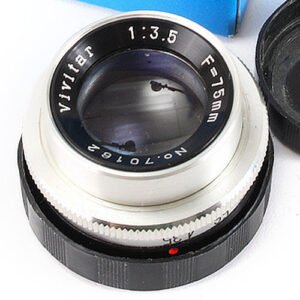




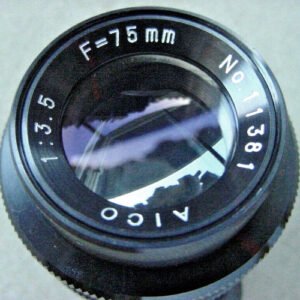






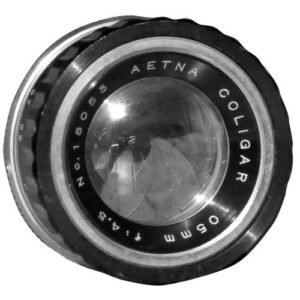
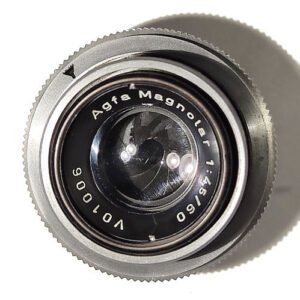


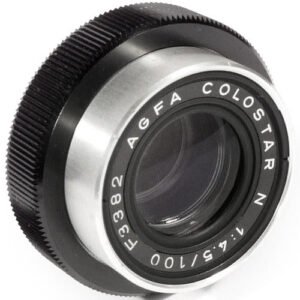


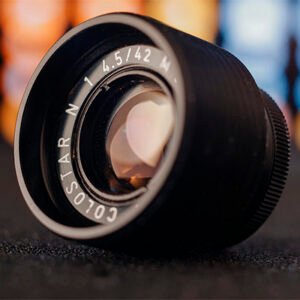
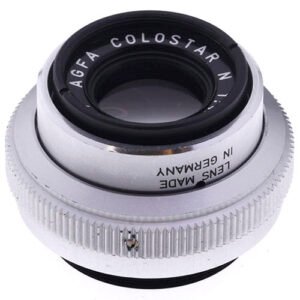

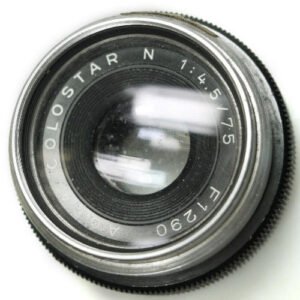


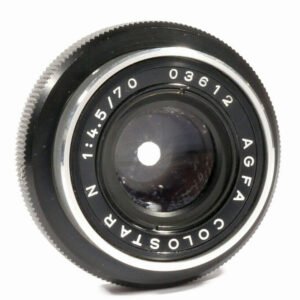


16:9 –
I confess to misjudging this lens initially. It arrived with externally dusty optics but appeared to be fairly clean internally. It delivered images that were very low in contrast, with severely degraded corners, but had an appealing drawing style. Wide open it had moderately severe spherical and chromatic aberration but unusually soft and ‘well-blended’ bokeh. It rated in the low 60% range for sharpness.
Several months later, I was Peroxide-purging a new batch of enlarger lenses and decided to deep-clean the Perfex 75/3.5 in order to get better product shots. The second element had some fine hazing not evident at first glance, and there was a question mark over its seating. On reassembly, it performed like a new lens – reminding me that a very high proportion of enlarger lenses have been opened up at some point in the intervening decades, and a surprisingly high percentage of them haven’t been properly put back together again.
Close up, centre-frame sharpness is now rather good, climbing from 7.9 wide open to 8.55 at f8. Zone C never reaches the same standard, only rising from 6.5 to 6.9, but the damage is all in the corners: Zone B looks more like C than A – in other words, across-frame consistency isn’t as bad as those figures sound, and subjects placed at thirds are serviceably sharp. All told, it’s a solid Bronze performer, unblemished by chromatic aberration or geometric oddities on the focal plane.
Don’t expect ‘triplet bubbles’: the Perfex 75/3.5 is nothing but smooth: no trace of ‘nisen’ or onion rings, no harsh or aggressive artefacts or freaky ‘oiliness’: even stopped down, the curved-5 diaphragm creates an unusually round aperture and correspondingly tidy bokeh. Mechanical vignetting is quite pronounced, with cat-eye highlights and mildly discernible swirling. On 35mm, there is no optical vignetting. Quite likely this lens covers 645 (probably with darker corners at wide apertures).
The aperture ring moves confidently from click to click and the lens is reassuringly well built. Commonly available in M39 for minimal outlay, a good unabused sample offers a highly cinematic, low-contrast, low-aberration alternative to a conventional taking lens: although short on saturation by modern standards, images from the single-coated Perfex 75/3.5 are natural-looking and distraction free. For times when you want footage or a photograph that doesn’t draw attention to itself, but calmly allows the subject to be the hero, this is a valuable little tool in the kitbag.